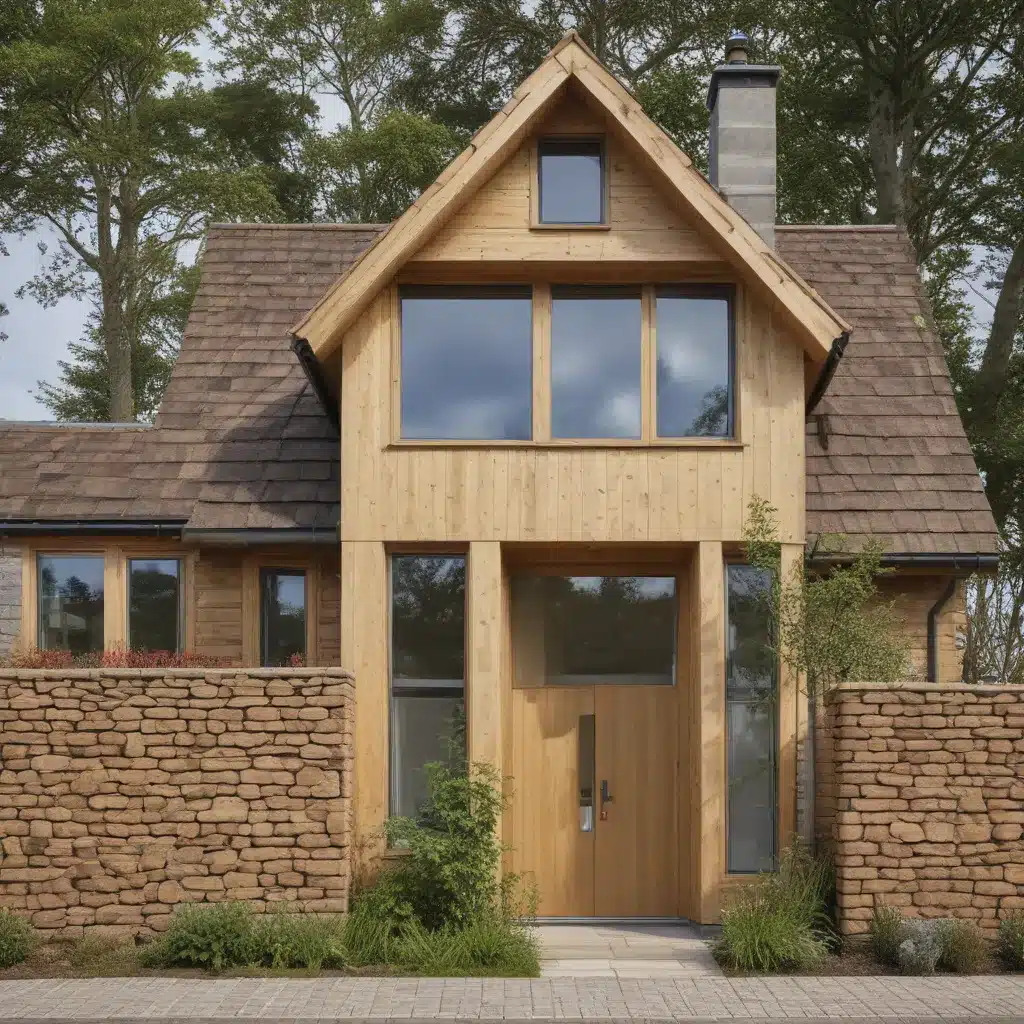
The Heartbeat of a Healthy Home
As a proud resident of Aberdeen, UK, I’ve always been captivated by the city’s rich history and breathtaking natural beauty. From the granite facades that line the city’s streets to the rugged coastline that hugs the North Sea, there’s an undeniable allure to the Granite City. However, when it comes to creating healthy, sustainable homes, Aberdeen faces some unique challenges.
You see, many of the older properties in the area were built using materials and construction methods that simply don’t align with modern standards of energy efficiency and indoor air quality. Drafty windows, outdated insulation, and the presence of potentially harmful substances like asbestos and lead paint can all contribute to a less-than-ideal living environment.
But fear not, my fellow Aberdonians! As a building and renovation specialist, I’m here to share my expertise on choosing eco-friendly materials that can transform your home into a veritable oasis of health and well-being. Together, we’ll explore the latest innovations in sustainable construction, uncovering hidden gems that not only benefit the planet but also nurture the well-being of you and your loved ones.
Going Green: A Holistic Approach
When it comes to creating a healthy, eco-friendly home, it’s not just about selecting the right materials. It’s about adopting a holistic mindset that considers the entire lifecycle of the products we use, from their sourcing and manufacturing to their eventual disposal or recycling.
One of the key principles I always emphasize is the importance of minimizing our environmental footprint. This means prioritizing materials that are renewable, biodegradable, and produced using clean, energy-efficient processes. Think about materials like hemp-based composites, which not only offer superior durability but also have a significantly lower carbon footprint than traditional wood products.
But it’s not just about the materials themselves – it’s also about how they’re used in the construction process. For example, laminate flooring can be a fantastic eco-friendly choice, as it’s made from recycled wood fibers and often features a low-emissions finish. By carefully selecting and combining these sustainable materials, we can create homes that are not only beautiful but also kind to the environment.
Breathing Easy: Prioritizing Indoor Air Quality
Of course, when it comes to healthy homes, the materials we choose are only half the story. The other crucial element is the impact they have on indoor air quality. After all, we spend the majority of our time indoors, and the air we breathe can have a profound effect on our overall well-being.
That’s why I always encourage my clients to steer clear of materials that may off-gas harmful volatile organic compounds (VOCs) or release dangerous particulates into the air. Instead, I recommend exploring alternatives like low-VOC paints, formaldehyde-free insulation, and even hemp-based building materials that are naturally free of these harmful substances.
By prioritizing indoor air quality, we’re not just creating healthier homes – we’re also supporting the long-term well-being of the people who live in them. After all, a home should be a sanctuary, a place where we can breathe deeply and feel truly at ease.
Waste Not, Want Not: Closing the Loop
Now, I know what you’re thinking: “But won’t all these eco-friendly materials cost an arm and a leg?” Well, I’m here to tell you that sustainable solutions don’t have to break the bank. In fact, by adopting a circular approach to home renovation and construction, we can actually save money in the long run.
One of the key ways to do this is by minimizing waste and maximizing the reuse and recycling of materials. Instead of sending perfectly good products to the landfill, we can explore opportunities to repurpose them or find new uses for them elsewhere in the home. Safe medication return programs are a great example of how we can responsibly dispose of household items and prevent them from ending up in our waterways or soil.
But it’s not just about recycling – it’s also about choosing materials that are designed to be durable and long-lasting. By investing in high-quality, eco-friendly products, you’ll not only be reducing your environmental impact, but you’ll also be saving money in the long run by avoiding the need for frequent replacements.
The Ripple Effect: Healthier Homes, Healthier Communities
As I mentioned earlier, the benefits of choosing eco-friendly materials for your home go far beyond just the walls of your property. By making sustainable choices, you’re contributing to the overall health and well-being of your community.
Think about it – when we prioritize materials that are produced using clean, renewable energy, we’re not just reducing our own carbon footprint, but we’re also supporting the growth of a more sustainable local economy. And when we choose products that are free of harmful chemicals, we’re not only protecting the air quality in our own homes, but we’re also safeguarding the natural environment that we all share.
It’s a ripple effect, really. By making small, conscious choices in our own homes, we can create a groundswell of positive change that reverberates throughout the entire community. And ABC Home is here to guide you every step of the way, ensuring that your renovation or construction project is a shining example of what’s possible when we come together to create a healthier, more sustainable future.
So, what are you waiting for, Aberdeen? Let’s roll up our sleeves and get to work on building the eco-friendly homes of our dreams!
















